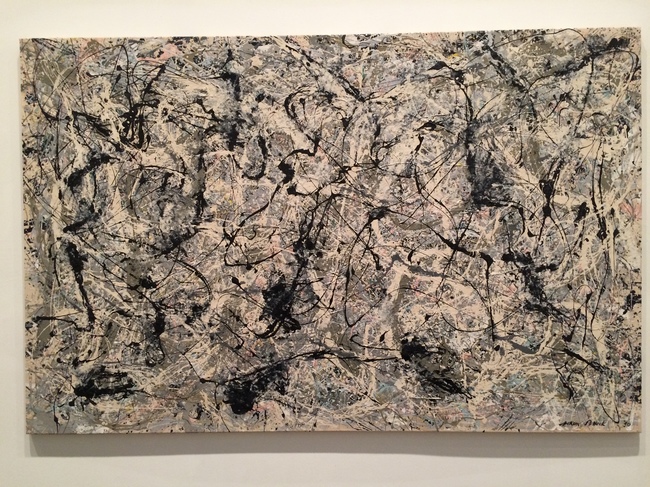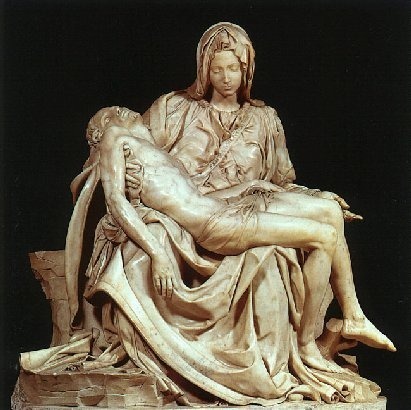Seeing differently. One reason art matters.
Cogitatively is fundamentally about being more thoughtful. To take that a step further, this blog is about seeing the world differently, from different angles and through different lenses. I want to examine this idea of seeing differently through the lens of art. Art is a large tent including various media such as painting, sculpture, photography, music, poetry and prose, as well as other creative pursuits. I will speak to visual arts in this post.
Art is often viewed as the province of the ultra-wealthy. So, we might experience something of an allergy to the elitism embodied in art. Others may see painting, for instance, as irrelevant in a world where digital cameras are ubiquitous. Why paint something that can be captured faithfully with our iPhone? Or maybe we see art as frivolous and fundamentally unimportant. I will argue why I think art matters and how it helps us to see differently.
The reasons for art not being a more meaningful part of most people’s lives, which I mentioned in the previous paragraph, are not completely without merit. Frankly, art is a place where elites can set themselves apart from their peers through impressive collections of the world’s finest art. I do not anticipate being able to buy a Van Gogh, a Matisse, or a Chagall in my lifetime. Nonetheless, not being a collector does not need to impede my appreciation of art. Moreover, whether one concludes art does not matter because of the availability of digital devices to capture nature’s beauty or because it just fundamentally does not matter is, in my opinion, probably a hasty conclusion. If one has spent the time to ponder and appreciate great art and has since arrived at the conclusion it is irrelevant, I respect that and we will agree to disagree. But, I think to examine whether art matters we need to consider the rather thorny question: what is art?
I acknowledge countless books, even weighty tomes, have been written on the question of what is art? So, perhaps it is utter hubris for me to offer a simple, layman’s answer to that question. In fact, my definition is a rather personal one. Art is three things to me:
1) A lens through which we view humanity
2) A mirror of ourselves as humans
3) A way to convey things that words are wholly inadequate to express
Many will disagree with my definition. However, if my definition holds any validity, then I would argue cameras, for example, cannot obviate the need for art and the notion that art is unimportant cannot be true.
Art has the ability to help us see what was happening in a society at a given time, or a lens through which we can look at ourselves or our forebears. Art has depicted lofty ideals as well as societal ailments. This gives us the ability to contemplate the human condition, to assess the situation in a way that is perhaps more direct than the written word. I am reminded of the lofty idealism of the renaissance painters such as Michelangelo and Raphael. I marvel at Caravaggio’s ability, through his mastery of light, to show both sides of humanity, light and dark, in such stirring fashion. I think of Edouard Manet’s criticism of the hypocrisy of Parisian society in the nineteenth century. I am troubled by the nihilism embodied in much of late twentieth and twenty-first centuries. In all instances, however, I reflect on humanity. I ponder what makes us different from other species. What drives us to create? Why do we adore beauty? What motivates us to look evil and ugliness in the eye with painstaking detail? For me, all of this is uniquely human and ever so relevant to society today as it has been in the past and will be in the future. I do not like all art, but I appreciate honest, true works whether they depict something I like or not. In a word, art is cogitative in nature. If we approach it the right way, art can be the window into humanity that helps us to understand those whom we do not see eye to eye with. It can be a tool we desperately need today to hold on to what makes all of us around the globe human.
Similar to art being a lens, art is also a mirror of ourselves as humans. The twentieth century moved from adoration of the genius artist to artists that served to hold the mirror up for us. That is, more recent art is not about the question what were they saying, but what are we thinking or feeling? I think of the moving works by Mark Rothko. Much of Rothko’s work does not attempt to depict grandiose scenes, but to provide an almost overwhelming experience through the color and size of the work that almost envelopes the viewer. His pieces are very moving. I have gone repeatedly to the Phillips Collection in Washington D.C. just to sit in the Rothko room and cogitate. No one can tell me what to think precisely about these pieces. I just think and feel. It is a reflective opportunity, or again, an opportunity to hold up the mirror to see what I see in myself. As a brief aside, one criticism I hear about modern art is that it looks so haphazard that a child could have done it. An example of this is Jackson Pollock. I have heard people say, “my two-year-old could do that.” I highly doubt that, but even if it were true, we are missing the point if that’s where our thinking stops. I was in New York a few weeks ago and I snapped this picture on my phone of a huge Pollock in the Metropolitan Museum of Art. I use this amateurish photo to say that while this photo depicts what one might call some “dribbles of paint,” what I saw was a very emotional and moving piece.
I cannot say what Pollock felt as he painted this, but he left a little of his soul on that canvas! One of our fellow beings left us to contemplate something that was uniquely human. Again the mirror of art causes us to ask ourselves what do I feel? Does this painting help me see things about myself that were not apparent to me before? This is the sort of useful reflection that art can help us with if we will let it.
Lastly, art conveys things that are as ineffable as trying to describe salt. I am deeply moved by seeing Michelangelo’s Pietà. The scene depicts a heartbroken mother holding her dead son, Christ. How could I try to put in words what is depicted here? I cannot. Words break down. They fail to stir us appropriately. Art, however, succeeds in conveying the deepest emotion of a mother whose love is boundless, but whose heart is unalterably broken.
To conclude, art matters if humans matter. If we are worthy of more than a passing thought as a human race, then art, which is in essence our reflection on canvas, marble, or any other material, matters too. Art invites us to see humanity and ourselves differently and to feel on a deeper level. Art invites us to look below the surface, and to enjoy a most cogitative activity, true reflection. I hope you will give art appreciation a try if you were opposed to it before. There is so much for each of us in the genius, the angst, the suffering, and the humanity in art across the ages. My wish for you and I is that we will see with new eyes again and again throughout our lives!

